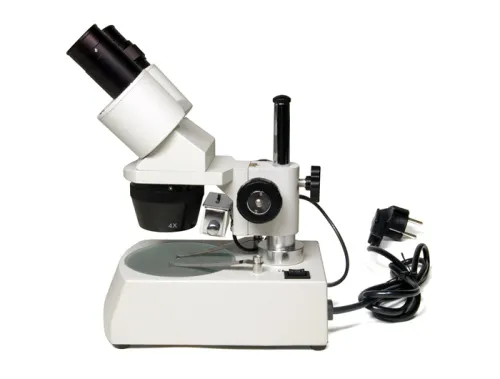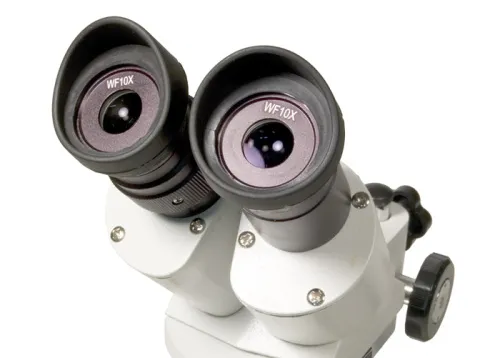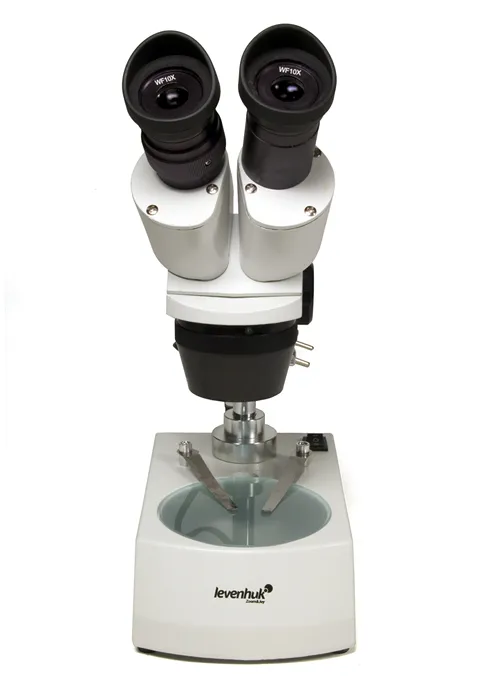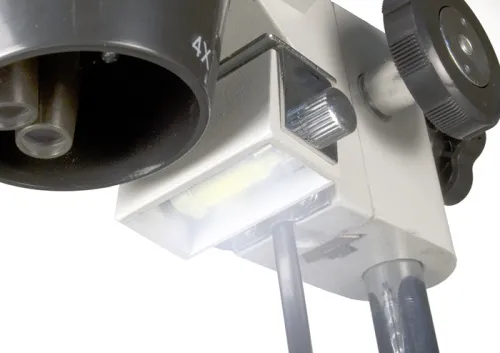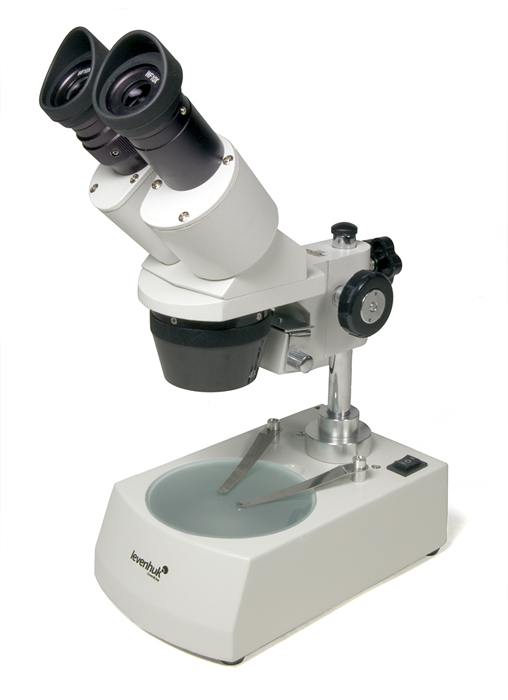Levenhuk 3ST Microscope
Stereo microscope. Binocular head. Magnification: 20–40x
| Product ID | 35323 |
| Brand | Levenhuk, Inc., USA |
| Warranty | lifetime |
| EAN | 5905555004556 |
| Package size (LxWxH) | 31x29x35 cm |
| Shipping Weight | 3.1 kg |
Levenhuk 3ST is a reliable stereo microscope with a binocular head inclined at 45 degrees. This design allows for comfortable observations for extended periods of time without any muscle strain, and no additional stress to the eyes due to the binocular head (comparing binocular microscopes to microscopes with monocular heads). The optics in this model are made of high-quality glass with special coating, so the rendered images are sharp and the colors are true.
Levenhuk 3ST is the standard model of the Levenhuk stereo microscope product range. This range of microscopes is perfect for professional research and casual observations by biologists, geologists, jewelers and many others. The 3D image of the observed object rendered by this microscope allows you to study the object in great detail and measure its dimensions with unprecedented precision.
This binocular microscope has a relatively long working distance of 57 mm (2.2 in) that allows you to study flat specimens as well as rather large objects.
The built-in illumination sources (upper and lower) allow you to use your microscope even in the dark. Halogen lamps used are highly economical and will serve you well for a considerably long time before you have to change them. For even more comfortable observations, you can rotate the stage plate so that it faces either the black or the white side upwards, and besides, hold a specimen in place with the useful stage clips.
Levenhuk 3ST Microscope comes with WF10x eyepieces and rotating objective with magnifications of 2x and 4x.
The kit includes:
- Levenhuk stereo microscope
- Binocular head
- WF10x eyepiece – 2 pieces
- Rotating objective: 2x, 4x
- Backup halogen lamp 12V/10W
- Matte glass stage
- Double-sided black and white stage plate
- Rubber eyecups
- User manual and lifetime warranty
Some things you can see under a microscope:





Levenhuk 3ST Microscope is compatible with Levenhuk digital cameras (purchased separately).
| Product ID | 35323 |
| Brand | Levenhuk, Inc., USA |
| Warranty | lifetime |
| EAN | 5905555004556 |
| Package size (LxWxH) | 31x29x35 cm |
| Shipping Weight | 3.1 kg |
| Type | stereo/instrumental |
| Microscope head type | binocular |
| Optics material | optical glass |
| Head | fixed (non-rotatable) |
| Head inclination angle | 45 ° |
| Magnification, x | 20 — 40 |
| Eyepiece tube diameter, mm | 30.5 |
| Eyepieces | WF10x (2 pcs.) |
| Objectives | 2x–4x (zoom) |
| Working distance, mm | 57 |
| Interpupillary distance, mm | 55 — 75 |
| Stage, mm | Ø90 |
| Stage moving range, mm | fixed |
| Stage features | two plates: black and white double-sided and matte glass, with clips |
| Eyepiece diopter adjustment, diopters | ±5 |
| Focus | сoarse: 40mm |
| Body | metal |
| Illumination | halogen |
| Power supply | 220V/50Hz |
| User level | beginners |
| Assembly and installation difficulty level | extremely simple |
| Application | for applied research |
| Illumination location | dual |
| Research method | bright field |
| Pouch/case/bag in set | dust cover |
We have gathered answers to the most frequently asked questions to help you sort things out
Find out why studying eyes under a microscope is entertaining; how insects’ and arachnids’ eyes differ and what the best way is to observe such an interesting specimen
Read this review to learn how to observe human hair, what different hair looks like under a microscope and what magnification is required for observations
Learn what a numerical aperture is and how to choose a suitable objective lens for your microscope here
An interesting review on how such microscopes work, form the 3D image and in what fields they are applied
Learn what a spider looks like under microscope, when the best time is to take photos of it, how to study it properly at magnification and more interesting facts about observing insects and arachnids
This review for beginner explorers of the micro world introduces you to the optical, illuminating and mechanical parts of a microscope and their functions
Short article about Paramecium caudatum - a microorganism that is interesting to observe through any microscope


